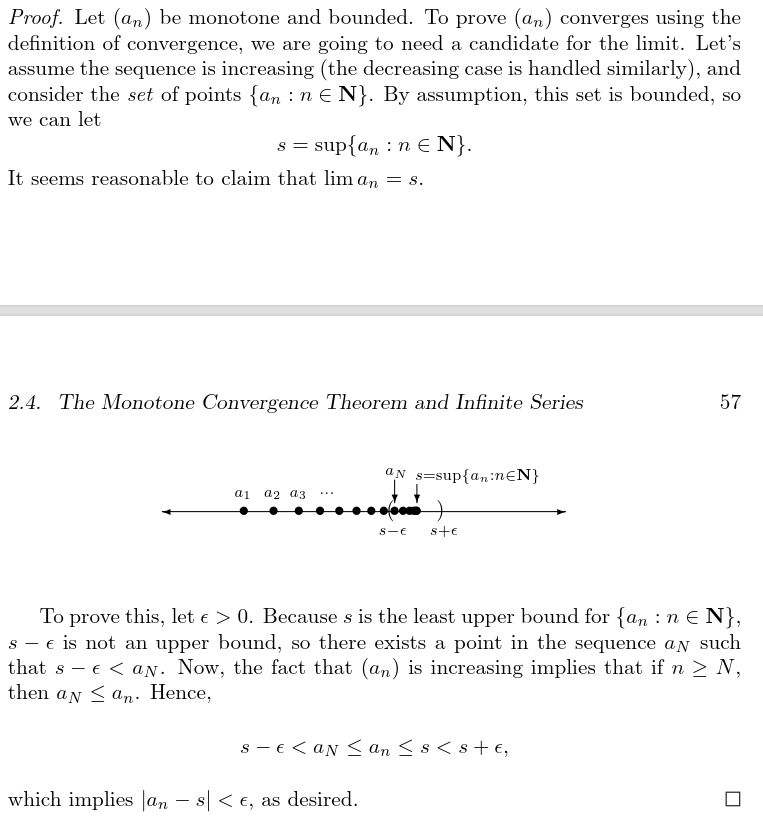\(
\newcommand{\cat}[1] {\mathrm{#1}}
\newcommand{\catobj}[1] {\operatorname{Obj}(\mathrm{#1})}
\newcommand{\cathom}[1] {\operatorname{Hom}_{\cat{#1}}}
\newcommand{\multiBetaReduction}[0] {\twoheadrightarrow_{\beta}}
\newcommand{\betaReduction}[0] {\rightarrow_{\beta}}
\newcommand{\betaEq}[0] {=_{\beta}}
\newcommand{\string}[1] {\texttt{"}\mathtt{#1}\texttt{"}}
\newcommand{\symbolq}[1] {\texttt{`}\mathtt{#1}\texttt{'}}
\)
Math and science::Analysis::Tao::06. Limits of sequences
Monotone bounded sequences converge
Increasing, decreasing and monotone
A sequence \( (a_n)_{n=0}^{\infty} \) is increasing
if \( a_n \le a_{n+1} \) for all \( n \in \mathbb{N} \) and decreasing
if \( a_n \gt a_{n+1} \) for all \( n \in \mathbb{N} \). A sequence is
monotone if it is either increasing or decreasing.
Monotone bounded sequences converge
If a sequence is monotone and bounded, then it converges.
The easiest card ever. The proof is on the reverse; can you think of it? The proof is easy and obvious in retrospect, but it uses a property that I originally didn't consider using to solve the problem.
Source
Abbott, p57
Tao, p138

